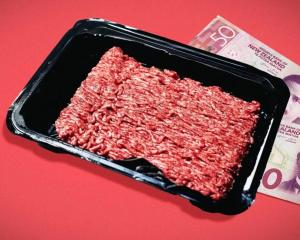
Limehills herefords owner Gray Pannett, of Millers Flat, said the seven-year Informing New Zealand Beef programme was the first major research project in the New Zealand beef industry in his time.
"There is some real good stuff coming out of it but we don’t want to get to ahead of ourselves," he said.
He had supplied genetics from his Hereford stud to the programme at Pamu’s Kepler Farm near Te Anau.
After he imports bull semen, he nominates those genetics for inclusion in the programme.
"It gives us links with Australia and United States because that is potentially where the gains are.
"We’ve got three lots of calves on the ground and we’ve got some kill progeny, which is really positive," he said.
Other breeds in the programme include Angus and Simmentals.
Mr Pannett hoped the programme would find ways to improve the fertility of cows rather than have a major focus on ways to grow bigger cattle.
"What drives a cow herd is fertility.
"Everyone focuses on growth and how big they are but you really need to be fertile to make money in the long run. We need them to get back in calf and have good calves every year, not just a big calf every now and then."
After the programme was finished, the interpretation of the data would be as important as the results, Mr Pannett said.
"A bull that wins on the growth rates may be the worst bull on the team because there are other things he is no good at."
He hoped once the programme was finished, research on feed efficiency across cattle breeds would be launched.

Beef + Lamb farming excellence general manager Dan Brier said growth was an easier trait to measure in cattle than fertility. Fertility and maternal traits took a long time to be expressed.
The programme was building on data from Beef + Lamb cattle progeny tests in the past decade.
"We will keep building those data sets after the programme," he said.
The programme was researching the impact hybrid vigour, or crossing breeds, had on maternal traits.
While the start of the programme was impacted by Covid 19, it was now hitting its stride and making good progress developing tools for commercial farmers to use.
A goal of the programme was boosting the New Zealand beef sector’s profits by $460 million in the next 25 years.
"Key to that is engaging with breed societies and stud breeders. We have put a lot of time and energy into making that as successful as it can be and the response has been excellent," he said.
Progeny testing would allow farmers to compare bulls across various breeds using the same scale.
Commercial farmers would be able to get information from the programme at more than 20 "better beef buying" workshops across New Zealand in autumn and spring this year.
Over the next year, farmers would be offered a range of tools and information including the publication of the indexes and prototypes and cross-breed analysis, he said.
Work was under way to develop new traits and ways to improve the body condition scores of beef cattle.
"There is something in the programme for everyone."














